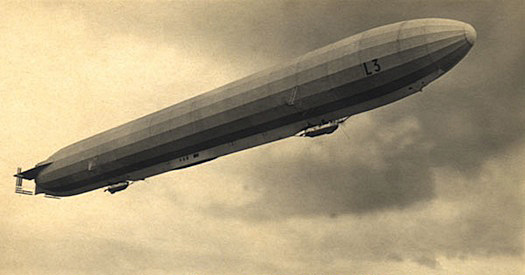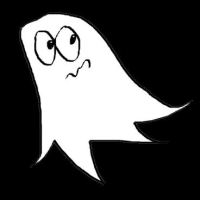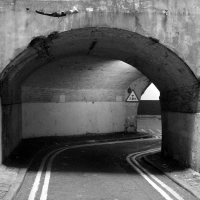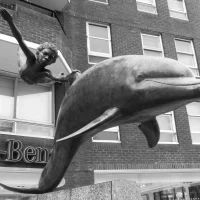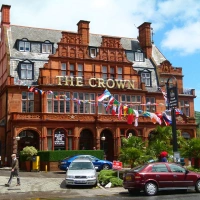Jimi Hendrix’s London (Part One)
Incredibly, it is almost fifty years since legendary musician, Jimi Hendrix’s sublime guitar skills became known to the world.
Born in Seattle, Washington on November 27th 1942, Jimi Hendrix obtained his first guitar- an acoustic model costing a mere $5- when he was fifteen years old.
In 1961 he enlisted in the army where he trained to be a paratrooper.
Military life wasn’t for Private Hendrix- perhaps most clearly demonstrated when he was caught dozing whilst on duty!
He was discharged in 1962 and, eager to forge a career in music, began touring clubs across the United States.
Over the next few years Jimi perfected his craft but despite his talent, he struggled to make a wage, remaining undiscovered and creatively stifled.
His luck changed in May 1966 whilst playing at the Cheetah club in New York.
Here he was spotted by Linda Keith– girlfriend of the Rolling Stones’ Keith Richards– who recommended the dazzling guitarist to Chas Chandler– former bassist for The Animals who was looking to establish himself as a manager.
Like Linda, Chas Chandler could see that Jimi Hendrix was indeed a very rare talent… and so decided to whisk him to London which, during the swinging 60s, was the place where Jimi Hendrix would flourish and make his name.
Tragically, it was also the city in which he would lose his life.
*
In tribute to Jimi Hendrix and to celebrate the exciting announcement that one of his former London homes will soon be opening to the public as a museum, I have compiled a list of some of the most notable London locations associated with the late, great performer…
*
11 Gunterstone Road, W14
Jimi Hendrix first arrived in London on 24th September 1966, flying into London Airport (which officially changed its name to ‘Heathrow’ that same year).
After several years as a struggling musician, Jimi Hendrix had very little to his name. When he boarded the plane in New York his only possessions were a change of clothes, a set of hair curlers, $40 (which he’d borrowed) and of course his beloved guitar.
Upon his arrival in London, Jimi was taken straight from the airport to 11 Gunterstone Road, West Kensington which was the home of British musician, Zoot Money, a major figure on the Soho scene at the time.
Whilst at the house, Jimi took part in a jamming session with Zoot’s friend, Andy Summers– who would later go on to play with The Police.
*
Scotch of St James Club, 13 Mason’s Yard W1
On the evening of 24th September 1966, Jimi Hendrix played his first ever UK solo gig at the exclusive Scotch of St James club in Mason’s Yard; a peaceful courtyard which is now dominated by the White Cube modern art gallery.
A stone’s throw from Buckingham Palace, the club was popular with The Rolling Stones and The Beatles, both of whom enjoyed the luxury of their own private tables. The Who and Stevie Wonder also spent time here.
Immediately after his set, Jimi met Kathy Etchingham and the pair embarked upon a two year relationship.
The following month, Hendrix returned to Scotch of St James with musicians Mitch Mitchell and Noel Redding, who together formed The Jimi Hendrix Experience and thus it was here that the trio performed their UK debut.
*
Les Cousins Club (now Club 49), 49 Greek Street W1
Originally opened in the 1950s as the ‘Skiffle Cellar’, Les Cousins (tucked away beneath the Soho Grill) was at the heart of London’s folk scene by the 1960s
After just a few days in London, Jimi Hendrix and Chas Chandler paid a visit to the club as regular guests, paying their own entry fee.
Blues musician, Alexis Korner was on stage that night and Chas Chandler asked if Jimi could join him on stage for a jamming session… needless to say the crowd were gobsmacked by the young American’s flair!
*
Westminster Polytechnic (now Westminster University, Regent Campus), Little Titchfield Street
On the evening of 1st October 1966, Cream were playing at this London Polytechnic campus when Jimi Hendrix rather audaciously asked if he could get up and jam with Eric Clapton, the UK’s undisputed guitar king.
Jimi’s skill and flamboyant style knocked Eric Clapton for six and, once back stage the Cream guitarist had to ask Chas Chandler if the American was ‘always that good?’!
Despite their guitar duel, Eric Clapton and Jimi Hendrix became firm friends.
*
Cromwellian Club (now gone), 3 Cromwell Road, SW7
Situated directly opposite the Natural History Museum, the Cromwellian Club was rumoured to have started life as an illegal gambling den.
By the 1960s, ‘The Crom’ as it was nicknamed had established itself as a popular casino and music venue, witnessing performances from the likes of Georgie Fame, Eric Clapton and a very young Elton John.
Jimi Hendrix played one of his earliest gigs here in October 1966.
*
Bag O’ Nails Club, 9 Kingly Street W1
The Jimi Hendrix Experience played a gig at the Bag O’Nails club on 25th November 1966, after which, Jimi remarked, “Britain is really groovy”- not a surprising observation considering the club backs onto the ultra-hip Carnaby Street.
At another Bag O’Nails gig on 11th January 1967, Paul McCartney and Ringo Starr were in the audience… it was the first time they’d seen Jimi play live and, naturally, they were entranced.
Later that year, Paul McCartney met his future wife, Linda at the club.
*
Blaises Club (now gone) 121 Queen’s Gate SW7
Located in the basement of the now demolished Imperial Hotel, Blaises (named after the cartoon character, Modesty Blaise) was a cramped, sweaty club which, according to Melody Maker journalist, Chris Welch, was a venue, “where musicians, agents, managers and writers allowed themselves to be deafened whilst imbibing quantities of alcohol.”
Jimi Hendrix appeared here on 21st December 1966 which led to one of first rave reviews: “Jimi has great stage presence and an exceptional guitar technique which involved playing with teeth on occasions and no hands at all on others!” (tricks which he’d learnt from old timers whilst on the US circuit).
Pink Floyd were another big name to appear at Blaises and the club can be seen in the cult 1967 film, The Sorcerers (in which Boris Karloff uses hypnosis to seriously mess up one cool cat’s mind!)
Please click below to view a clip of the Blaises club in its heyday:
*
34 Montague Square, W1
During the 1960s, the basement of this rather grand address was leased by Ringo Starr.
Consequently, the home has numerous connections with The Beatles– the song, ‘Eleanor Rigby‘ was developed here for example and in 1968 the racy cover for John Lennon and Yoko Ono’s, Two Virgins album was snapped on the premises.
Jimi Hendrix rented the basement from Ringo between December 1966 and March 1967, moving in with his girlfriend, Kathy Etchingham. Whilst at the address, Jimi composed ‘The Wind Cries Mary’.
Unfortunately Ringo had no option but to evict Jimi Hendrix when the guitarist, whilst under the influence of LSD, splashed paint all over the walls…
One of the most iconic photographs of Jimi was taken just across the road on Montagu Place outside the Swedish embassy. Sadly, the original street sign has since been removed.
*
Lime Grove Studios (now gone), W12
Between 1940 and 1991, Lime Grove in Shepherd’s bush was home to a BBC studio where many classic shows including Top of the Pops, Blue Peter, Doctor Who and a 1954 adaptation of George Orwell’s, 1984 (performed live and starring Peter Cushing) were filmed.
The Jimi Hendrix Experience filmed their first appearance for Top of the Pops here on 29th December 1966 with a performance of ‘Hey Joe’. Their next shoot took place on 30th March 1967– and can be viewed below.
Sadly, Lime Grove studios were demolished in 1993 and a modern housing development now occupies the site.
*
The Upper Cut Club (now gone), 1-39 Woodgrange Road, E7
Out beyond Stratford and past the former 2012 Olympic Park, this is probably the furthest east Jimi Hendrix ever ventured whilst in London!
Based in Forest Gate, the Upper Cut Club was in business for just one year between 1966 and 1967. Despite its short span, the club shone bright playing host to such greats as The Who, Otis Redding, Sam and Dave, Prince Buster, Ben. E. King and Nina Simone.
The Jimi Hendrix Experience appeared at the Upper Cut on Boxing Day, 1966…and it was here, whilst resting in the club’s dressing room, that Jimi penned Purple Haze, one of his most definitive hits.
A simple plaque now marks the site.
*
The Speakeasy Club (now gone), 48 Margaret Street, W1
Opened in 1966 a short distance from the bustle of Oxford Circus, the Speakeasy modelled itself on the illegal drinking dens which flourished during the era of American prohibition.
Visitors entered and signed in via a fake undertaker’s parlour… and were then permitted to enter the main club through a false wardrobe door! Inside, a menacing portrait of Al Capone loomed over the patrons.
This was one of Jimi Hendrix’s favourite London clubs and he could often be spotted hanging out with friends here.
Jimi’s first Speakeasy gig took place in February 1967… and it was here that he cheekily tried to chat up Mick Jagger’s then girlfriend, Marianne Faithful!
To be continued
Tales From the Terminals: Broad Street Station (1865-1986)
This edition of Tales from the Terminals is slightly unusual in that it deals with a station that no longer exists…
Broad Street

Broad Street Station in 1898
For many years, Broad Street was a vital cog in the capital’s transport infrastructure.
Situated in the heart of The City, the station sat right next door to Liverpool Street station–in fact, Broad Street was on the scene first, opening as a terminal for the Great Northern Railway in 1865, 9 years before its larger neighbour moved in.
The map below depicts the location (coloured in blue) of this now long-gone terminal:

Location of Broad Street in relation to Liverpool Street
Broad Street was originally envisioned as a goods depot; a hub designed to link rail freight travelling between Birmingham and London’s sprawling docks; both key players in Britain’s then vast empire.
However, some bright spark suggested that, being in the heart of the financial district, it would be a good idea to encourage passenger use too.
They were right and, during the first half of its life, Broad Street, along with Liverpool Street and Victoria, was one of London’s top three busiest stations, pouring 1,000s of commuters into the City every day from areas such as Camden, Stratford, Watford and Richmond.
In 1902 alone, it was recorded that 27 million people passed through Broad Street.
However, as the 20th century progressed, passenger numbers began to decline; primarily due to the increased development of the tube and tram networks which were able to ferry commuters around with greater flexibility.
Bombs over Broad Street
Broad Street’s effectiveness as a major rail terminal was also hindered during the two World Wars.
In WWI, the station suffered at the hands of Germany’s fearsome new weapon- the Zeppelin.
On the night of the 8th September 1915, an enemy airship, piloted by Heinrich Mathy- notorious as being the most brazen of the Zeppelin pilots and who had carried out the most bombing raids on the UK- unleashed the Great War’s most destructive attack on the capital.

Heinrich Mathy, the Zeppelin captain who unleashed a devastating attack on London, including Broad Street station
Approaching the UK via Cambridge, arcing around Hertfordshire and North London, Mathy navigated his hulking craft high over Golders Green, following the Finchley Road before taking a detour towards the centre of the capital where the assault commenced.
Russell Square, Theobalds Road (where the Dolphin Tavern was hit- a clock which was damaged in the attack can still be seen behind the bar), Hatton Garden, Farringdon Road (where a plaque commemorates the event) and Bartholomew Close in Clerkenwell were all pounded.

A Zeppelin caught in searchlights over london
Heading further east, the Zeppelin then approached the capital’s financial heart where it released further vengeance.
One bomb exploded directly outside Broad Street station, striking a bus; killing the conductor and several passengers.
More bombs were unleashed over nearby Norton Folgate, causing considerable damage to the tracks leading into the station.
The raid that night claimed the lives of 22 Londoners, with 87 more seriously injured.
Heinrich Mathy himself was killed a year later when the Zeppelin he was captaining was shot down over Potters Bar by the renowned flying ace, Leefe Robinson.
*
During the Blitz of WWII, Broad Street escaped being hit directly.
However, a number of East-End stations serving the terminal were so badly damaged during the nightly raids that they were forced to close for good. These included stations at Haggerston, Shoreditch, Victoria Park and an entire line which branched out to Poplar.
Such closures only served to add to Broad Street’s passenger drain.

Parade of shops at the bottom of Kingsland High Street where the old Shoreditch station once stood… a metal door which led up to the station can be seen around the corner on Old Street…
Struggling on
As passenger numbers dwindled, so too did the building itself and, by the late 20th Century, Broad Street station was in a very poor state of repair.

Broad Street, March 1985 (photo: Geograph)
Writing about the station in 1973, Sir John Betjeman lamented at the removal of a large portion of the station’s roof before going on to say;
“Standing on the empty concourse at Broad Street today, one has a feeling of its former greatness.
Incongruous and ridiculous, in red brick with pavement-light windows is a streamlined booking office for the few passengers who use this potentially popular line. May God save the Old North London!”
The following, short Cine-film clip (part of a collection from Southern Railway Films) shows Broad Street station as it appeared in 1969:
In 1984 Broad Street station was granted one final gasp of recognition; lending its name to Paul McCartney’s album and film of the same title; Give My Regards to Broad Street.
In the film, the former Beatle has 24 hours to track down the master tape for his latest album which has gone missing. The recording is discovered towards midnight, in a forgotten cupboard at Broad Street station itself, rather appropriate considering how decayed and overlooked the once grand station now was.
Sadly, the movie was a commercial and critical failure, its reviews almost as depressing as the state of the station itself.
A scene featuring Paul McCartney pacing around Broad Street station appears towards the end of the film, illustrating just how desolate and dilapidated it had become by this point.
By 1985, only 6,000 people per week were using the station’s limited service- miniscule by London standards and a colossal downfall when compared to the station’s late 19th century heyday.
Towards the end of its life, only two of Broad Street’s nine platforms were in use; the other seven being left to crumble and succumb to weeds.

Broad Street, 1983 (Photo: Wikipedia)
In June 1986, the station was finally wound down and closed for good.
After the tracks have gone…
Today, Broad Street has all but vanished.
The station’s closure coincided with the massive 1980s financial boom, when office space was in particularly high demand- planning permission for such space tripled between 1985-1986.
Consequently, before the dust from Broad Street’s demolition had even settled, developers stormed in, hard-hats on, tape measures in hand, quickly forging the 32 acre ‘Broadgate’ complex; a large area consisting of squares, offices, shops and restaurants.
The project commenced with a ceremony in which then Prime Minister, Margaret Thatcher, fired up the site’s first crane.

Part of today’s Broadgate complex… this office block stands on the former site of Broad Street’s main building. Part of Liverpool Street station can be seen to the right of the photograph.
At its full capacity, Broadgate is capable of serving some 30,000 workers.

The ‘ampitheatre’ at the centre of the Broadgate complex
The Broadgate site also contains a wide collection of specially commissioned public sculptures, one of which is ‘Fulcrum’, towering over the junction of Liverpool Street and Eldon Street, roughly marking the point where Broad Street’s forecourt once stood.

‘Fulcrum’ sculpture
Sculpted in 1987 by Californian artist, Richard Serra, Fulcrum is crafted from several huge planks of steel (rumour has it that the slabs are old girders from the former station, although as yet I’ve been unable to confirm this).
The trick of this artwork is that the plates are not welded together or joined in any firm way; relying upon the law of physics alone to keep them in place… if you dare to walk beneath them, you can find a small, but well sheltered oasis from the surrounding crowds!

Inside Fulcrum…
Old sections of the mouldy, brick viaduct, which once carried trains over the rooftops and into Broad Street, can still be seen hiding north of Liverpool Street, around the Shoreditch area.

Part of the old viaduct which once led into Broad Street, located on Fairchild Place (off of Great Eastern Street)

Broad Street viaduct, sliced off at the junction of Great Eastern Street and Fairchild Place
One section of the viaduct has been cleverly recycled and is now home to the quirky ‘Village Underground’; a unique collection of artists’ studios.
What makes Village Underground so wonderfully distinctive is that the creative spaces are housed within old tube carriages!

Village Underground, Shoreditch
These particular models of tube car (of which only 30 were built) ran on the Jubilee line between 1983 and 1998.
Growing up during this period, I personally remember them well, with their slattted wooden floors and orange, chequered seats. As I drive past in my cab below, I often find myself wondering how many times I travelled on the Village Underground carriages when they carrying out their original purpose down in the Jubilee tunnels!

Village Underground.. former Jubilee line carriages
Elsewhere in London, another ex-1983 stock tube carriage has been put to a similar eccentric use- you’ll find it in the grounds of Great Ormond Street Children’s Hospital, where it acts a studio for ‘Radio Lollipop’!
Back in Business
A little further up, in the vicinity of New Inn Yard (now fittingly renamed New Bridge Yard), the old arches are once again back in use; linking up with a spanking new viaduct which, since 2010, has carried the new London Overground line; an extensive route which has merged existing lines and reactivated dormant ones- including a section of tracks which once ran into Broad Street.

The brand new London Overground viaduct, linking up with the original, brick arches, half a mile away from where Broad Street station once stood…
One of the stations on the new Overground is Hoxton… where you can discover a special artefact from the old Broad Street station …

Hoxton Station
Take a walk along Geffrye Street-a tranquil road which runs alongside Hoxton station’s viaduct- and you’ll see a rare survivor from Broad Street… the terminal’s old war memorial:
Unveiled at Broad Street in February 1921 and dedicated to the 69 men of the Great Northern Railway who lost their lives during WWI, this memorial- which resembles Whitehall’s solemn Cenotaph in miniature form- was carefully removed during the levelling of Broad Street in 1986.

The memorial in its original, Broad Street location (image from London Reconnections website)
After being kept in storage for three years, it was then moved south to Richmond, one of the more far-flung stations which had been connected to Broad Street, where it remained until 2011.
With the opening of the London Overground and the reinstatement of routes which had once served Broad Street, it was decided to move the war memorial closer to its original home.
On 7th June 2011, the little cenotaph arrived in Hoxton and was rededicated by the Reverend James Westcott (of St Chad’s Church, Haggerston) in a respectful, low-key ceremony.
The newly re-located memorial, along with the new London Overground route (the popularity of which was correctly predicted by Sir John Betjeman) have ensured that the spirit of Broad Street can quietly live on within the capital it once so effectively served.













































